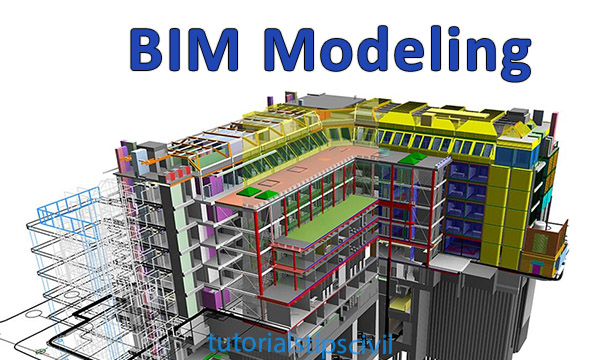Everything about Pros & Cons Of Using A Bim Model For Your Next Project …
Building details modeling (BIM) is a procedure supported by numerous tools, innovations and agreements including the generation and management of digital representations of physical and practical attributes of places.4d construction Structure details designs (BIMs) are computer system files (typically however not constantly in exclusive formats and consisting of proprietary information) which can be drawn out, exchanged or networked to support decision-making concerning a built asset.
The idea of BIM has remained in advancement because the 1970s, however it only ended up being a predetermined term in the early 2000s. bim modelling. Development of standards and adoption of BIM has advanced at various speeds in different nations; standards established in the United Kingdom from 2007 onwards have actually formed the basis of worldwide basic ISO 19650, launched in January 2019.
The first software tools established for designing structures emerged in the late 1970s and early 1980s, and consisted of workstation products such as Chuck Eastman’s Building Description System and MOVE, RUCAPS, Sonata, Reflex and Gable 4D Series. The early applications, and the hardware required to run them, were costly, which limited extensive adoption.
The term ‘Building Info Design’ very first appeared in a 1992 paper by G.A. van Nederveen and F. P. Tolman. Nevertheless, the terms ‘Structure Details Design’ and ‘Structure Information Modeling’ (including the acronym “BIM”) did not end up being commonly used until some ten years later. In 2002, Autodesk released a white paper entitled “Building Details Modeling,” and other software vendors likewise started to assert their participation in the field.
Facilitating exchange and interoperability of info in digital format had actually previously been offered under differing terms by Graphisoft as “Virtual Structure”, Bentley Systems as “Integrated Task Models”, and by Autodesk or Vectorworks as “Building Details Modeling”. The pioneering role of applications such as RUCAPS, Sonata and Reflex has been acknowledged by Laiserin along with the UK’s Royal Academy of Engineering.


These applications differ from architectural preparing tools such as AutoCAD by allowing the addition of more information (time, cost, makers’ details, sustainability, and maintenance details, etc.) to the structure design. As Graphisoft had actually been developing such solutions for longer than its competitors, Laiserin regarded its ArchiCAD application as then “among the most fully grown BIM options on the market.” Following its launch in 1987, ArchiCAD ended up being related to by some as the very first execution of BIM, as it was the first CAD item on a computer able to create both 2D and 3D geometry, in addition to the very first industrial BIM product for desktop computers (bim modelling).
To attain interoperability between applications, neutral, non-proprietary or open requirements for sharing BIM data among different software applications have actually been established (bim modelling). Poor software interoperability has long been considered as an obstacle to market efficiency in general and to BIM adoption in particular. In August 2004 an US National Institute of Standards and Innovation (NIST) report conservatively estimated that $15.
capital facilities industry due to inadequate interoperability emerging from “the extremely fragmented nature of the industry, the industry’s continued paper-based business practices, a lack of standardization, and inconsistent innovation adoption among stakeholders”. An early BIM standard was the CIMSteel Combination Standard, CIS/2, an item design and information exchange file format for structural steel project info (CIMsteel: Computer System Integrated Manufacturing of Constructional Steelwork).
Fascination About 4 Reasons Bim Is Important – To Vercator.com
It was established by the University of Leeds and the UK’s Steel Building Institute in the late 1990s, with inputs from Georgia Tech, and was approved by the American Institute of Steel Building as its information exchange format for structural steel in 2000 – bim modelling. BIM is typically connected with Market Structure Classes (IFCs) and aecXML information structures for representing details established by buildingSMART – bim modelling.
Building Operations Building information exchange (COBie) is likewise related to BIM. COBie was created by Costs East of the United States Army Corps of Engineers in 2007, and helps capture and record devices lists, product information sheets, service warranties, extra parts lists, and preventive maintenance schedules. This information is used to support operations, upkeep and asset management once a developed asset remains in service (bim modelling).
COBie has been included into software, and might take several forms including spreadsheet, IFC, and ifcXML – bim modelling. In early 2013 BuildingSMART was working on a light-weight XML format, COBieLite, which appeared for evaluation in April 2013. In September 2014, a code of practice relating to COBie was provided as a British Requirement: BS 1192-4.
UK BS and PAS 1192 requirements form the basis of further parts of the ISO 19650 series, with parts on asset management (Part 3) and security management (Part 5) published in 2020 (bim modelling). The IEC/ISO 81346 series for reference classification has published 81346-12:2018, also understood as RDS-CW (Referral Classification System for Construction Works).


